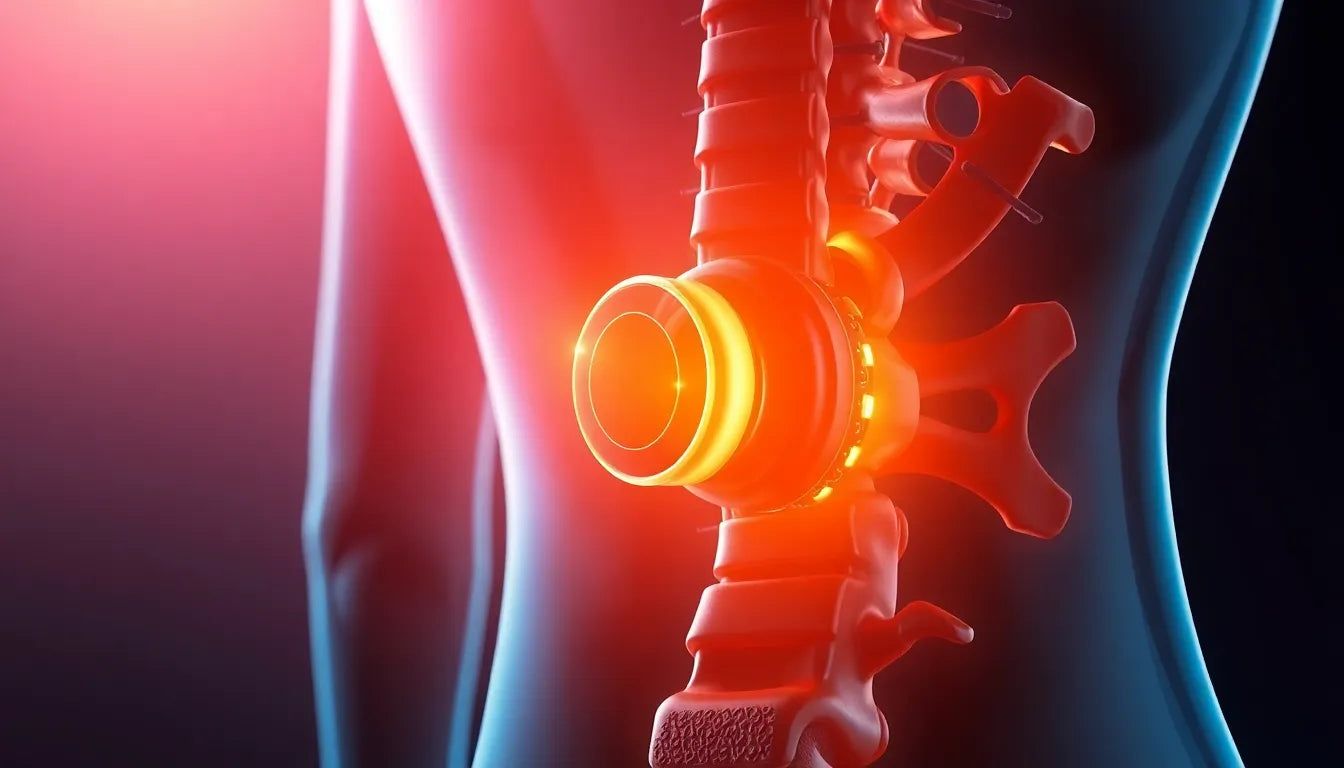Piriformis sciatica is a condition that can significantly impact daily life, often manifesting as a sharp, radiating pain that travels from the lower back through the buttock and down the leg. This discomfort is primarily due to the piriformis muscle, located in the buttock, irritating or compressing the sciatic nerve. As a result, individuals may experience not only the characteristic sciatic pain but also buttock pain, muscle spasms, difficulty sitting, and increased pain during specific movements. Understanding the nature of piriformis syndrome is crucial, as it plays a pivotal role in causing these symptoms.
Understanding piriformis syndrome
Piriformis syndrome arises when the piriformis muscle, which helps stabilize the hip and aids in leg movement, becomes tight or spasms, leading to compression of the sciatic nerve. This compression is what triggers the symptoms associated with sciatica. The prevalence of piriformis sciatica can vary, but it is a common issue that affects many individuals, particularly those who engage in activities that strain the lower back and hips, such as prolonged sitting, running, or cycling. The impact on daily life can be profound, making simple tasks like sitting, walking, or even standing for extended periods challenging and painful.
The challenge of diagnosis
Diagnosing piriformis syndrome can be particularly challenging due to its symptom overlap with other conditions like lumbar disc herniation and hip bursitis. These conditions can also cause sciatic pain, making it difficult to pinpoint the exact cause without thorough examination. Accurate diagnosis is essential for effective treatment, as the management strategies for piriformis syndrome differ significantly from those for other causes of sciatica. Physicians often rely on a combination of physical examinations and specific tests designed to identify piriformis muscle tightness or spasms to differentiate it from other potential causes.
Given the complexities involved in diagnosing and treating piriformis sciatica, it is imperative for individuals experiencing these symptoms to seek professional evaluation. Early and accurate diagnosis not only aids in alleviating pain more effectively but also helps prevent the condition from worsening. As we delve deeper into understanding piriformis sciatica, it becomes evident that a comprehensive approach to diagnosis and treatment is vital for those affected by this painful condition.
Conservative treatment approaches for piriformis sciatica
When it comes to managing piriformis sciatica, conservative treatment approaches are often the first line of defense. These strategies focus on alleviating symptoms and addressing the root causes without resorting to invasive procedures. One of the most fundamental strategies involves rest and activity modification. This means avoiding activities that exacerbate symptoms, such as prolonged sitting or repetitive movements that strain the lower back and hips. Alternating between ice and heat applications can also provide relief by reducing inflammation and soothing muscle tension. Over-the-counter pain medications, particularly nonsteroidal anti-inflammatory drugs (NSAIDs) like ibuprofen, can be effective in managing pain and inflammation.
The cornerstone role of physical therapy
Physical therapy plays a pivotal role in the treatment of piriformis sciatica, offering a structured approach to recovery. The primary goal is to stretch and strengthen the piriformis and surrounding muscles, thereby alleviating pressure on the sciatic nerve. Stretching exercises, such as the seated piriformis stretch, help to increase flexibility and reduce muscle tightness. Strengthening exercises focus on the gluteal muscles and core, which support the lower back and pelvis, enhancing stability and reducing the likelihood of future flare-ups.
In addition to exercises, physical therapy often incorporates posture correction and gait adjustments. These interventions aim to improve body mechanics and reduce undue stress on the lower back and hips. Techniques like massage and myofascial release are also commonly used to alleviate muscle tension and improve blood flow. Furthermore, therapists may employ modalities such as electrical stimulation, ultrasound, or transcutaneous electrical nerve stimulation (TENS) to enhance healing and reduce pain.
Medications and procedures for advanced cases
In cases where conservative measures are insufficient, medications and certain procedures may be considered. Muscle relaxants like baclofen and cyclobenzaprine can be prescribed to alleviate muscle spasms. In some instances, anti-inflammatory medications or botulinum toxin injections are used to reduce inflammation and muscle tension.
For more persistent or severe cases, injections of corticosteroids or anesthetics may be administered to target inflammation and interrupt pain signals. These injections are typically guided by imaging techniques to ensure precise delivery to the affected area. Surgery, although rarely required, may be considered a last-resort option for individuals who do not respond to other treatments. Surgical intervention aims to release the piriformis muscle and decompress the sciatic nerve, providing relief from chronic pain.
Conclusion
Addressing piriformis sciatica requires a comprehensive approach that combines conservative treatments with more advanced interventions when necessary. By focusing on physical therapy as the cornerstone of treatment and exploring medications and procedures for more severe cases, individuals can find relief and regain control over their daily lives. It is crucial for those experiencing symptoms to seek professional guidance to ensure an accurate diagnosis and effective treatment plan tailored to their specific needs.
Effective self-management and home exercises for piriformis sciatica
Managing piriformis sciatica effectively often involves a proactive approach to self-care, incorporating exercises and lifestyle modifications into daily routines. Regularly performing specific exercises can significantly alleviate symptoms and prevent future flare-ups. Among the most beneficial exercises are stretches and strengthening routines that target the piriformis muscle and surrounding areas.
One highly recommended stretch is the figure-four stretch, which helps relieve tension in the piriformis muscle. To perform this stretch, lie on your back with your knees bent, cross one ankle over the opposite knee, and gently pull the uncrossed leg towards your chest. This stretch should be felt in the buttock and hip area, providing relief from tightness.
Strengthening exercises are equally important in managing piriformis sciatica. Exercises such as clamshells and fire hydrants target the gluteal muscles, enhancing support for the lower back and hips. Clamshells involve lying on your side with knees bent, then lifting the top knee while keeping the feet together. Fire hydrants require starting on all fours and lifting one leg out to the side, like a dog at a fire hydrant.
In addition to exercises, self-massage techniques using foam rollers or tennis balls can help alleviate muscle tension. Rolling the affected area gently can enhance blood flow and reduce muscle tightness, contributing to overall relief.
The importance of a multi-pronged approach
Combining stretching, strengthening, and self-massage is crucial for optimal results in managing piriformis sciatica. This comprehensive approach not only addresses the immediate symptoms but also promotes long-term recovery and prevention. Empowering patients to take an active role in their recovery can lead to more effective and sustained relief.
Emerging modalities in treatment
For cases that do not respond well to traditional treatments, emerging modalities such as dry needling and neural therapy are gaining attention. These techniques aim to target and release muscle tension and nerve irritation more directly. Ongoing research continues to explore these and other innovative treatments, offering hope for individuals with refractory piriformis sciatica.
Frequently Asked Questions
What is the difference between piriformis syndrome and sciatica?
Piriformis syndrome is a specific condition where the piriformis muscle irritates or compresses the sciatic nerve, leading to sciatica. In contrast, sciatica can be caused by various other conditions, such as lumbar disc herniation or spinal stenosis. The key difference lies in the source of nerve irritation.
How can I tell if my sciatica is caused by piriformis syndrome?
Signs that your sciatica might be due to piriformis syndrome include pain that worsens when sitting or performing activities that involve hip movement. A physical examination by a healthcare professional can help differentiate piriformis syndrome from other causes of sciatica.
When should I consider seeing a doctor for my symptoms?
If you experience persistent or severe symptoms that do not improve with self-care measures, it is advisable to seek medical evaluation. Red flags include significant weakness, numbness, or loss of bladder or bowel control, which require immediate medical attention.
Are there any lifestyle changes that can help prevent piriformis sciatica?
Making ergonomic adjustments, such as using supportive chairs and maintaining good posture, can help prevent piriformis sciatica. Additionally, incorporating regular exercise and stretching into your routine can strengthen the muscles and reduce the risk of recurrence.
How long does it take to recover from piriformis sciatica?
Recovery time can vary depending on the severity of the condition and the effectiveness of the treatment plan. Many individuals experience improvement within a few weeks to months with consistent self-care and physical therapy. However, some cases may take longer, especially if underlying issues persist.
Sources
- WebMD. "Piriformis Syndrome: Causes, Symptoms, Treatments."
- Spine-health. "Piriformis Syndrome: Symptoms, Diagnosis, and Treatment."
- Harvard Health. "Piriformis Syndrome: An Overlooked Cause of Sciatica."
- Healthline. "Piriformis Syndrome: Symptoms, Causes, and Treatment."
- YouTube. "Piriformis Syndrome Stretches and Exercises."
- PubMed. "Surgical and Non-surgical Treatment Options for Piriformis Syndrome."
- Petersen Physical Therapy. "Piriformis Syndrome: Treatment and Self-Help Tips."


















